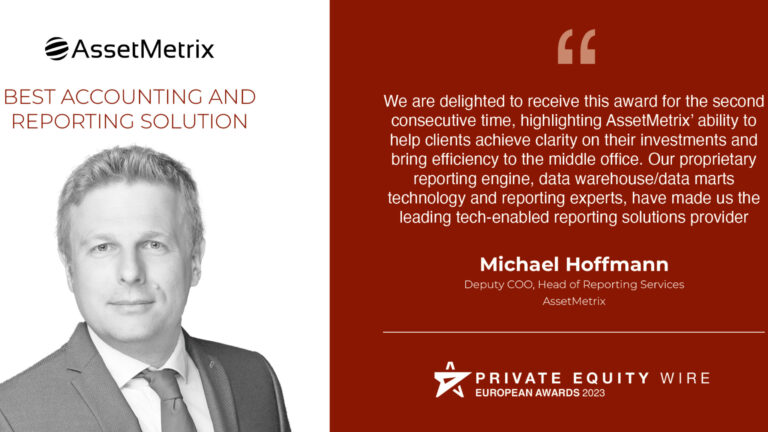I recently wrote an article about the challenges we at AssetMetrix are observing General Partners struggle with, in regard to investor reporting in the market. I highlighted four challenges in particular:
In order to master these, as well as other challenges associated with investor reporting, there is no alternative to the use of technology components and combining them in a sensible way. Only by using state-of-the-art software and interfaces can solutions be created that help to solve the challenges general partners face in the long term.
At AssetMetrix, we have done just that and built a comprehensive reporting landscape consisting of aligned technology components. I will briefly examine four of the essential components in more detail below.
A solid DWH infrastructure has always been and will remain the backbone of reporting
Every reporting needs a source from which selected information can be extracted. A general data warehouse (DWH) or customer-specific data marts form the backbone of every modern reporting infrastructure. When setting up this infrastructure, care must be taken to ensure an optimal data organisation that takes into account both the professional concerns and the technical conditions of the reporting system to be used. This is the only way to reliably handle the ever-increasing amounts of data in the private capital sector and to optimally support the reporting process.
Expandability is also a dimension to be considered when initially setting up the data model. New data points, e.g. due to ESG regulation, must be seamlessly integrated and combined with the existing data.
Another aspect is the central calculation and storage of key performance indicators. These must already be computed at an earlier stage and then fully calculated and stored in the DWH. This prevents later inconsistencies between different sections of the report.
Automatic data checks provide certainty
Only those who have mastered data complexity can set about tackling the specific reporting issues. But prior to that, attention should be paid to another technological component that performs its job in the background: Automatic data validation.
This component contains a set of professional rules that can be used to check the entered and calculated data for correctness and consistency. The rules can be set to apply to all mandates or merely to individual mandates. The definition of the technical rules is carried out by our experts at AssetMetrix, who apply their long-standing experience in the processing of private capital mandates.
By using this component, our customers gain the certainty that all data is in a reportable state after successful completion of the assessment and manual checks of the subsequent report can thus be significantly minimised.
Flexibility through a configuration database
While the data warehouse comprises the contents of a report, the configuration database contains all information about the structure and layout of the report.
The meta data regarding the exact structure of the report, consisting of its components (KPI chart, NAV bridge, TVPI development, etc.) and their sequence are stored here. Furthermore, the fonts used, font sizes, colours, other layout details as well as customer-specific terms/translations are stored. Each configuration is unique and reflects the respective customer requirements. The configurations also ensure that reports always follow the same pattern and that the report is coherent.
“Pixel Perfect” – the right visualisation software sets you apart
The final technology component is a professional reporting system that allows the creation of reports in “pixel perfect” quality. The reporting system uses information from the configuration database and the data warehouse and creates the complete report of the highest quality within a few seconds.
With the combination of a stable database, automated checks, flexible configuration options and a professional reporting engine, the challenges described above can be solved efficiently. But even beyond that, the architecture offers a wide range of possibilities to master further challenges.
Contact our team to find the best way to solve your reporting challenges!
Arrange a demo

As part of the BAI Anniversary Brochure 2022, AssetMetrix’ CTO shares insights on the topic of technology transformation in private equity and looks at how fund managers and investors can turn challenges into opportunities.

How the partnership with AssetMetrix enables Circle Eleven to enhance transparency, control and customer satisfaction.

Having most recently won the “Best Accounting and Reporting Solution” award at the Private Equity Wire European Awards 2023, AssetMetrix is interviewed on how technology investments can create operational excellence in reporting.

Regulatory changes are now providing a massive push for the industry to look to technological applications to simplify their ESG journey. Check out 3 ESG-related areas where technology can act as a game changer for private capital investors.